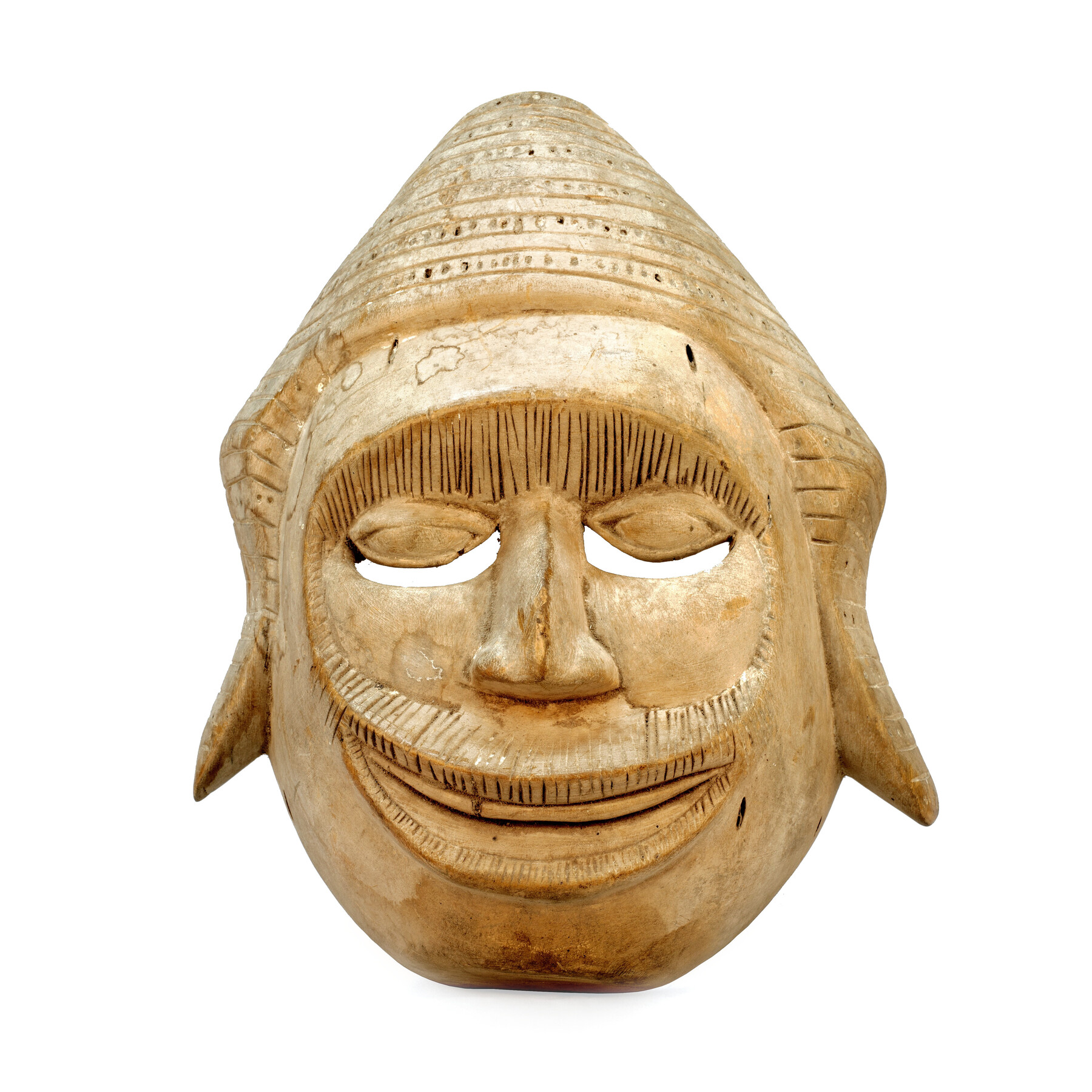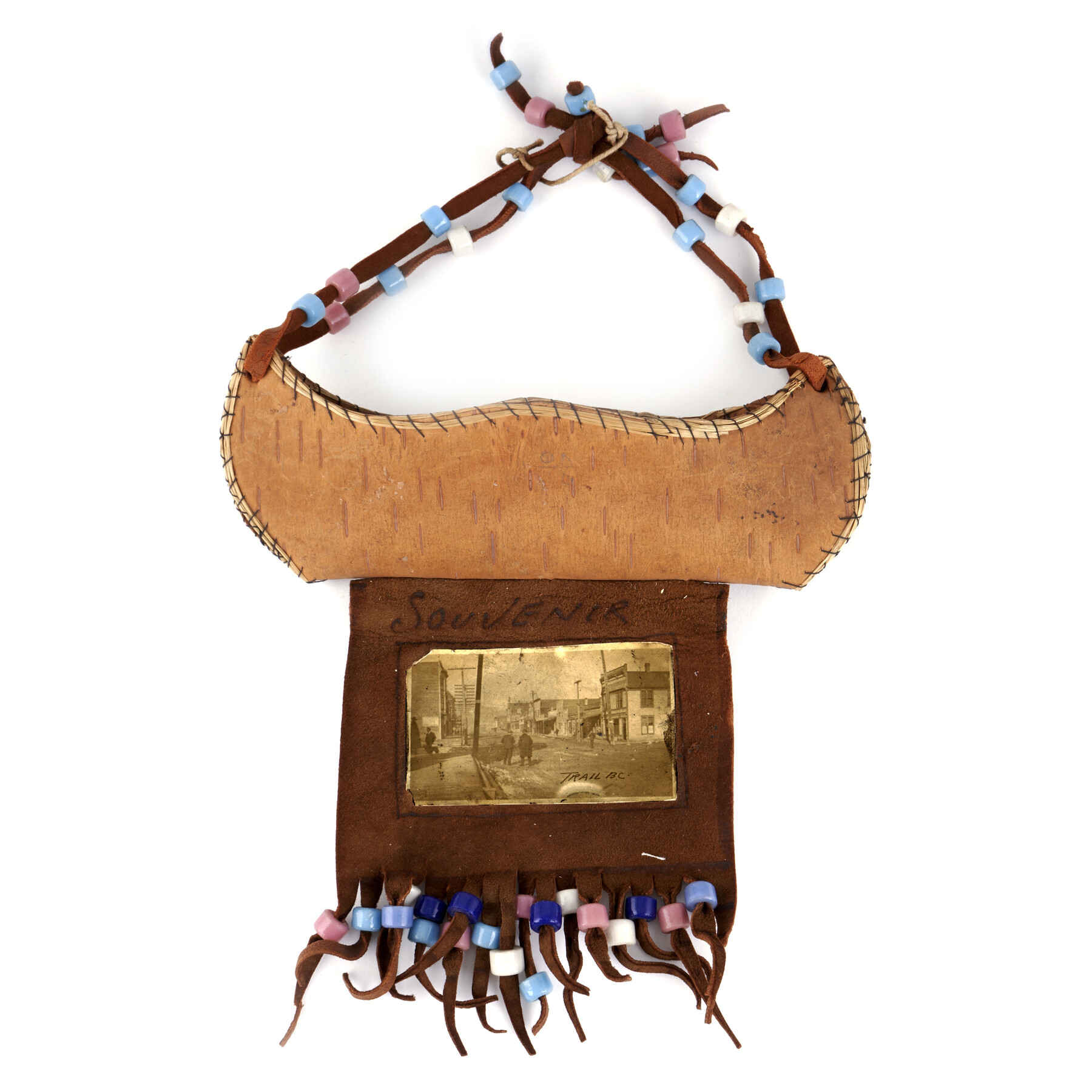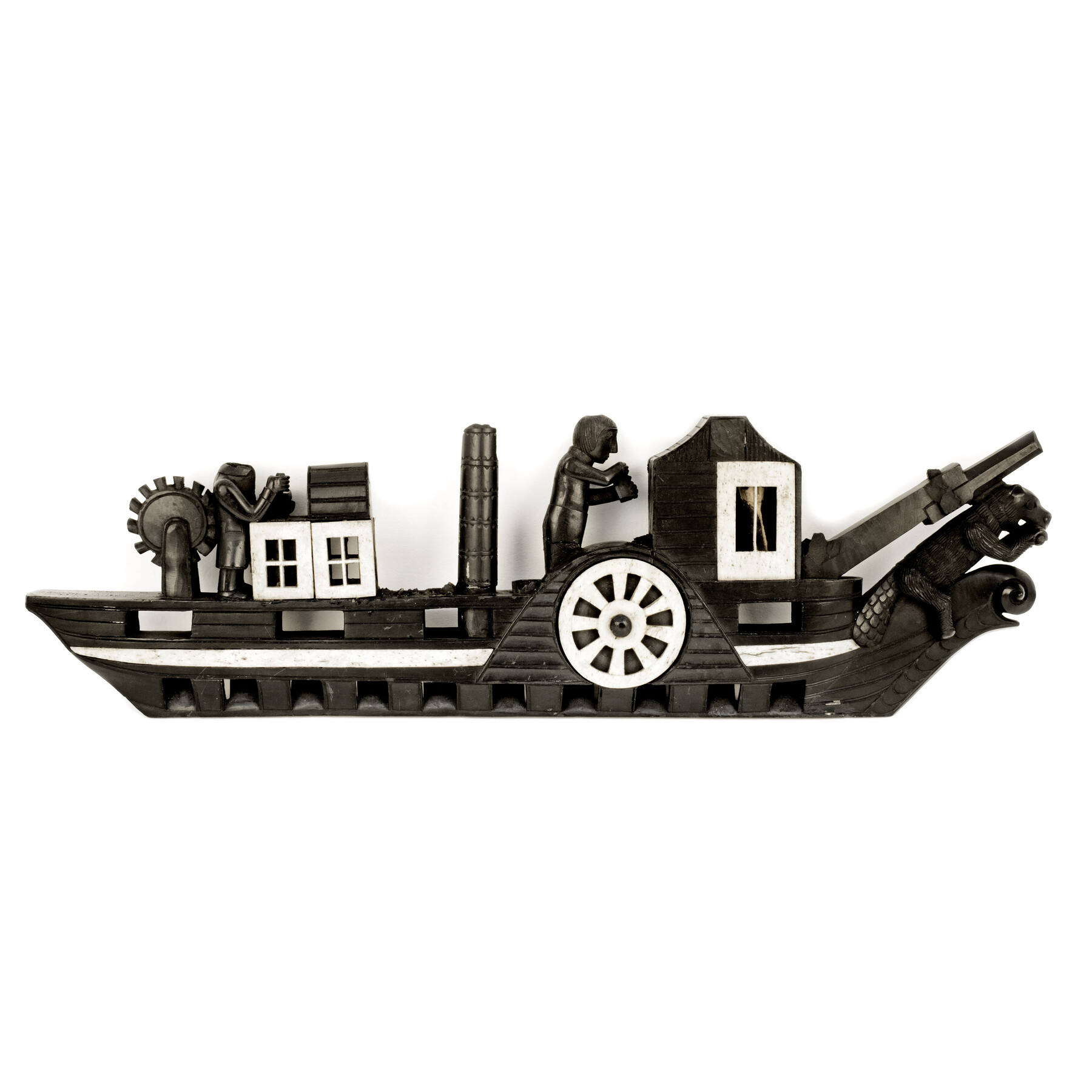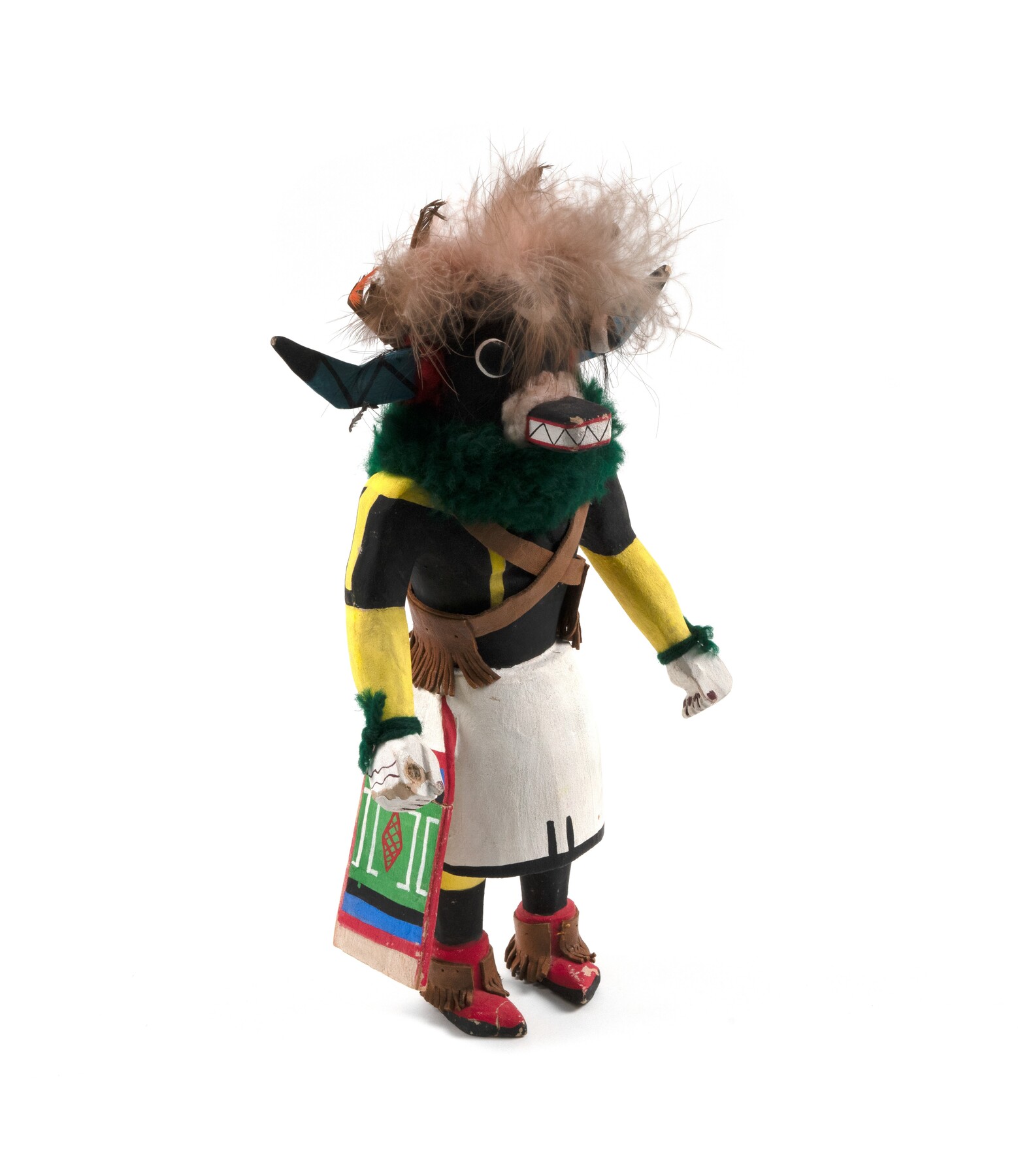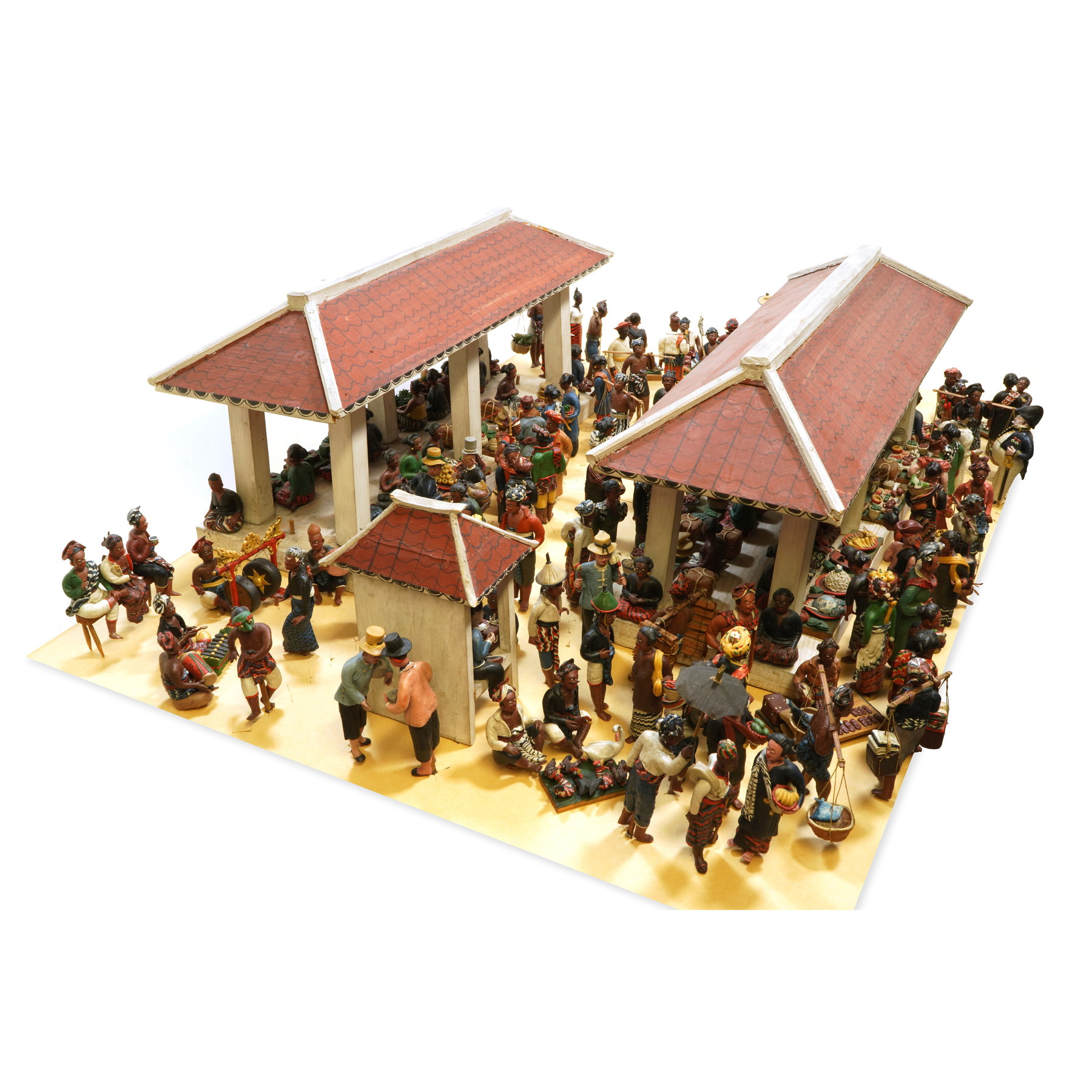Tradition and Trade

Do you buy traditional crafts when you travel?
Traditional crafts travel the world as souvenirs. Tourist demand can make them into a recognisable symbol of the place where they were made. Selling cultural souvenirs can benefit local communities by helping preserve crafting techniques or can be hurtful by replacing cultural value with a monetary priority. Understanding the motivations of purchasers and creators provides insight into these complex object histories.

Silver crown from Chile
This crown, dating to the turn of the 20th century, was made by retrafes, master silversmiths of the Indigenous Mapuche of south-central Chile. Mapuche silverwork began incorporating new motifs after Spanish contact. This crown was commissioned for a Scottish buyer, indicated by the Mapuche and Scottish design elements of anthropomorphic faces and thistles. Today, replicas of Mapuche silverwork are commonly found in tourist markets, but Mapuche artists are reclaiming the artform. ABDUA:9200

Dance mask from Nigeria
This wooden mask was made by the Ibibio people. These masks depict human faces with exaggerated facial features. They often had a plant fibre hood to cover the wearer from head to waist and some had a movable jaw. This mask lacks a moveable jaw, a string to make it wearable, and a way to attach the hood. Collected in 1963, this mask was likely not intended for ceremony, but as a souvenir. ABDUA:52655

Canoe purse from Canada
A Ktunaxa Nation member probably made this purse purchased in Trail, British Columbia. This purse in the form of a miniature canoe features a street view from the early 1900s. European colonisation stripped the Ktunaxa Nation of their land, hunting grounds, and trade networks. Their artforms were then commodified and sold for European audiences as a way to earn money in the European-dominated economic climate. ABDUA:5530

Boat pipe from Canada
The Haida people of Haida Gwaii in British Columbia, Canada are renowned for their skilled carvings produced from the black argillite shale found exclusively on the islands. Following European contact, Haida carvers began to market these pipes for eager 19th century visitors. This one was probably commissioned by Captain William Mitchell of the S.S. Beaver, the Hudson Bay Company’s supply ship and the first paddle wheel steamer on the Northwest coast. ABDUA:5559

Kachina figure from United States
Kachina figures represent Katsina spirits, religiously significant beings to some Pueblo peoples. These figures are ceremonially passed down to daughters. This one, likely from the mid to late 20th century, was purpose-made for the souvenir market. American federal law prohibits selling Native American art that is falsely claimed to have been made by Native American peoples. This protection can create difficulties by unintentionally excluding Indigenous artists who are not enrolled in a federally recognised tribe. ABDUA:5540

Miniature market from Indonesia
This model showcases a market scene in Surabaya, Java with food vendors, musicians, and European visitors. In the mid-1800s, at the height of Dutch colonisation in Indonesia, detailed and expansive dioramas, like this one, were the souvenir of choice for high-ranking Europeans working with Dutch trading companies. It stands out from the traditional artistic practices and materials found in Java, and nothing like the market scene was made before or after this period of western colonisation. ABDUA:9496 and ABDUA:9572



